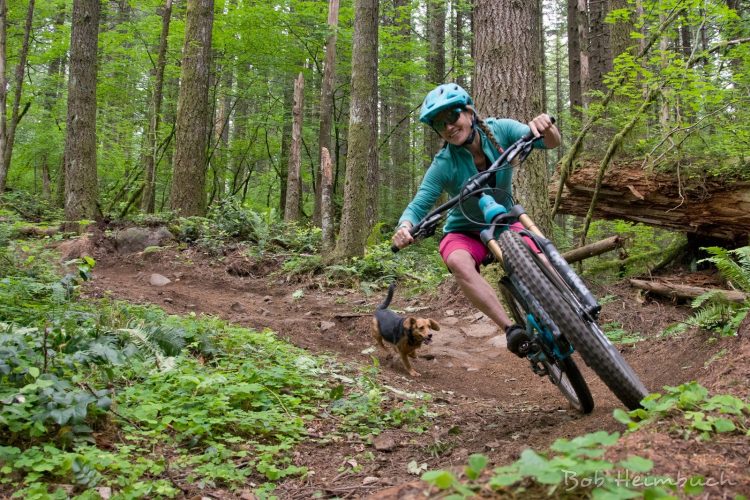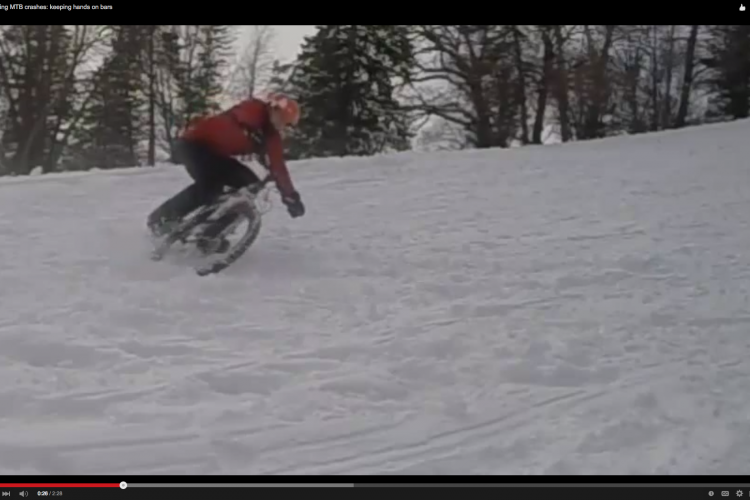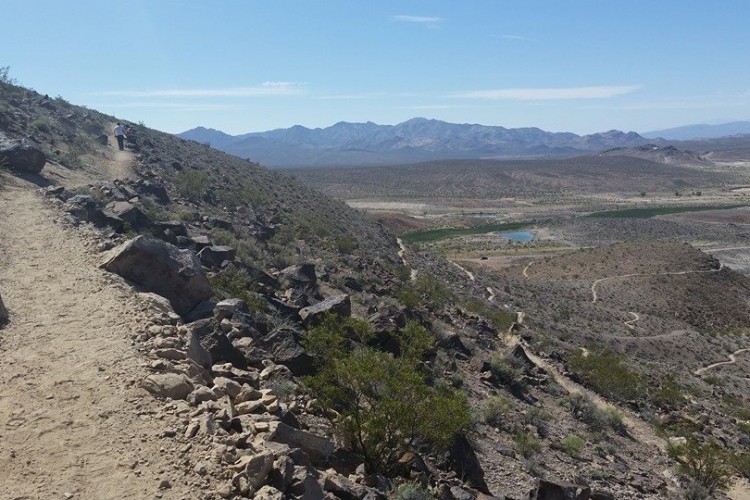This time of year, mud, snow, and ice cover trails across the continent, and sunshine is in short supply. Most mountain bikers acknowledge that riding soft trails can accelerate erosion and widen precious singletrack into jeep roads. But sometimes, it’s tough to know if trails are dry enough to ride.
“It is something that takes some experience,” said Mark Eller, the communications director for the International Mountain Bike Association. “There is definitely a bit of judgment involved.”
To help new mountain bikers decide when to ride off-road after a heavy rain or snowstorm, Eller provided a few basic rules.
[see_also id=’226317′]
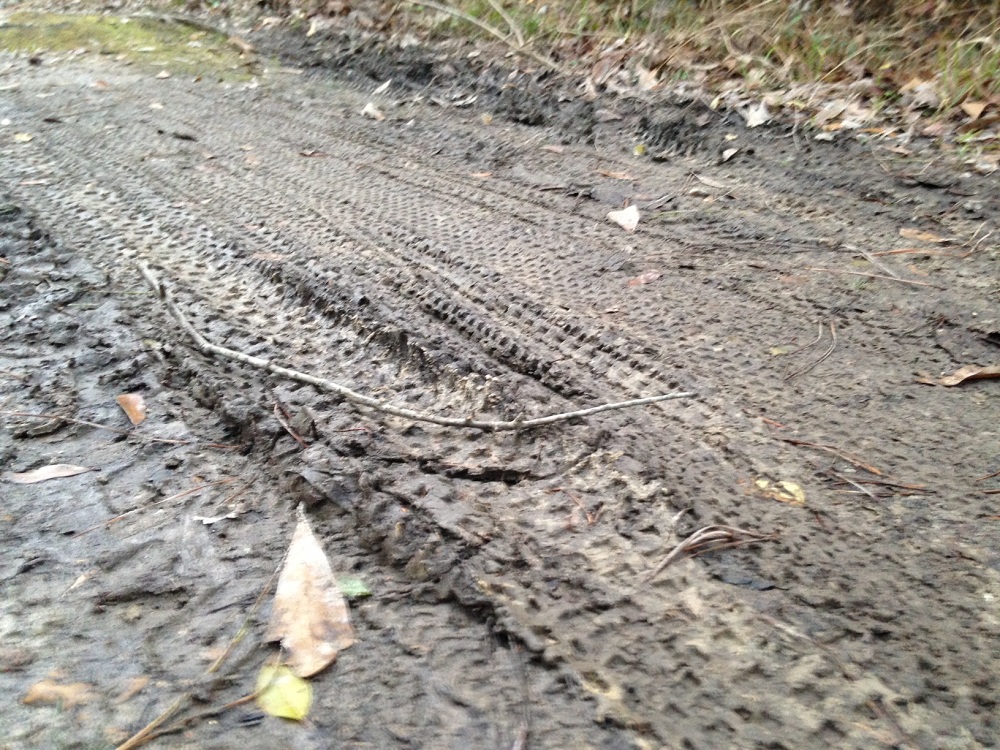
Do Your Research
Between email, social media, and mountain bike group websites, learning about trail conditions isn’t too tough.
“Find out about the trail conditions before you leave the house as best you can and through whatever means you can,” Eller said.
After a rain, most groups have a lively discussion about trail conditions. If it’s too wet to ride, a few riders will always retreat to Facebook to gripe.
Know Your Trails
Trails dry at different speeds. It all depends on the design and the dirt.
“Generally the rockier the soil is, the less damage you have to worry about from wet conditions,” Eller said. “If you’ve got a trail that has a lot of organic soil that has been wet for a long time, it’s going to take a while to dry out for sure.”
The trails I ride near the Gulf Coast are built on loam and silt that stays muddy for days or weeks during the winter, while one hillside course I regularly rode in the Smoky Mountains shed water so quickly, we joked it could be ridden in a downpour.
Learn about your local trails by talking to veteran riders and those who maintain the land.
Judge for Yourself
Sometimes, after loading all your gear, prepping your bike, and driving out of town, the trail just looks iffy. You can’t tell from the trailhead whether it’s too wet to shred.
It’s tempting to just go ride.
“Even the most experienced mountain biker falls into that trap pretty easily,” Eller said.
In this situation, avoid riding if it’s lightly raining or snowing, Eller said. Also, if the singletrack is frozen early in the morning, be aware that as the mercury rises, the trail will thaw and become slippery.
“You know things are only going to go downhill from where they are now in terms of the trail getting more wet and more susceptible to damage,” Eller said. “That’s a pretty good indication that it’s time to halt your riding plans. It’s going to get worse instead of better.”
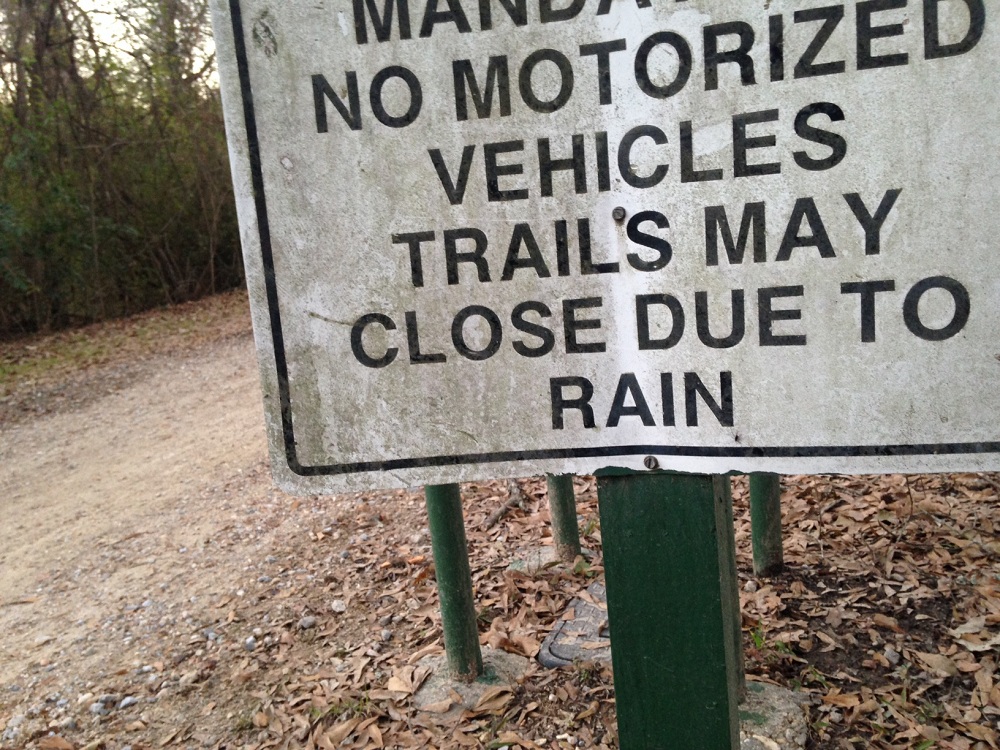
Tread Lightly
Once you venture onto the trail, conditions can change dramatically around the next switchback. If you’re leaving a visible rut, or you’re slipping and losing traction when you lay down the watts, then bail.
“You can be pretty sure at that point that you’re harming the trail surface,” Eller said. “You’re moving too much soil around, and that’s going to be a good time to stop your ride.”
If trail conditions worsen miles into a ride, it’s OK to go ahead, but be cautious. Walking causes as much damage to wet trail as riding a bike, according to IMBA, so stay on the bike and continue slowly through the middle of the trail without sliding your tires.
“Don’t try to ride around wet spots because you’re going to end up widening the singletrack,” Eller said.

Love Your Trails
Even the most carefully-built trails need maintenance. Don’t always assume that a professional will follow you on shovel duty and knock down all the ruts. It’s usually a volunteer, another mountain biker who wakes up early on a Saturday to repair and rebuild the singletrack.
“It’s good to think of it in those terms,” Eller said. “It’s not just somebody getting paid to do some work. It’s your fellow trail enthusiasts who are going to help repair the damage.”
Contact your local mountain bike club or IMBA chapter and ask about the next trail maintenance day. They probably need a hand.
[see_also id=’198168′]











